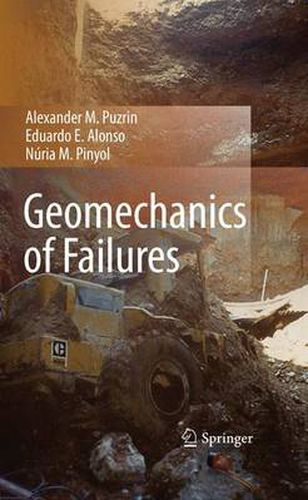Readings Newsletter
Become a Readings Member to make your shopping experience even easier.
Sign in or sign up for free!
You’re not far away from qualifying for FREE standard shipping within Australia
You’ve qualified for FREE standard shipping within Australia
The cart is loading…






This title is printed to order. This book may have been self-published. If so, we cannot guarantee the quality of the content. In the main most books will have gone through the editing process however some may not. We therefore suggest that you be aware of this before ordering this book. If in doubt check either the author or publisher’s details as we are unable to accept any returns unless they are faulty. Please contact us if you have any questions.
The main goal of this introductory text is to demonstrate how basic concepts in Soil Mechanics can be used as a forensic tool in the investigation of geotechnical failures. This, in turn, provides a good opportunity to show how to use available procedures in the formulation of useful simple models. Geotechnical failure is understood here in a broad sense as the failure of a structure to function properly due to a geotechnical reason. Some of the geotechnical failures selected are well known for their impact on the geotechnical community. Others are closer to the author’s experience. They have been organized into three main topics: Settlement, Bearing Capacity and Excavations. They cover a significant proportion of every day’s activity of professional geotechnical engineers. No attempt has been made to create a comprehensive handbook of failures. Instead, the emphasis has been given to creative applications of simple mechanical concepts and well known principles and solutions of Soil Mechanics. The book shows how much can be learned from relatively simple approaches. Despite this emphasis on simplicity, the book provides a deep insight into the cases analyzed. A non-negligible number of new analytical closed-form solutions have also been found. Their derivation can be followed in detail. In all the cases described an effort was made to provide a detailed and step by step description of the hypothesis introduced and of the analysis performed.
$9.00 standard shipping within Australia
FREE standard shipping within Australia for orders over $100.00
Express & International shipping calculated at checkout
This title is printed to order. This book may have been self-published. If so, we cannot guarantee the quality of the content. In the main most books will have gone through the editing process however some may not. We therefore suggest that you be aware of this before ordering this book. If in doubt check either the author or publisher’s details as we are unable to accept any returns unless they are faulty. Please contact us if you have any questions.
The main goal of this introductory text is to demonstrate how basic concepts in Soil Mechanics can be used as a forensic tool in the investigation of geotechnical failures. This, in turn, provides a good opportunity to show how to use available procedures in the formulation of useful simple models. Geotechnical failure is understood here in a broad sense as the failure of a structure to function properly due to a geotechnical reason. Some of the geotechnical failures selected are well known for their impact on the geotechnical community. Others are closer to the author’s experience. They have been organized into three main topics: Settlement, Bearing Capacity and Excavations. They cover a significant proportion of every day’s activity of professional geotechnical engineers. No attempt has been made to create a comprehensive handbook of failures. Instead, the emphasis has been given to creative applications of simple mechanical concepts and well known principles and solutions of Soil Mechanics. The book shows how much can be learned from relatively simple approaches. Despite this emphasis on simplicity, the book provides a deep insight into the cases analyzed. A non-negligible number of new analytical closed-form solutions have also been found. Their derivation can be followed in detail. In all the cases described an effort was made to provide a detailed and step by step description of the hypothesis introduced and of the analysis performed.